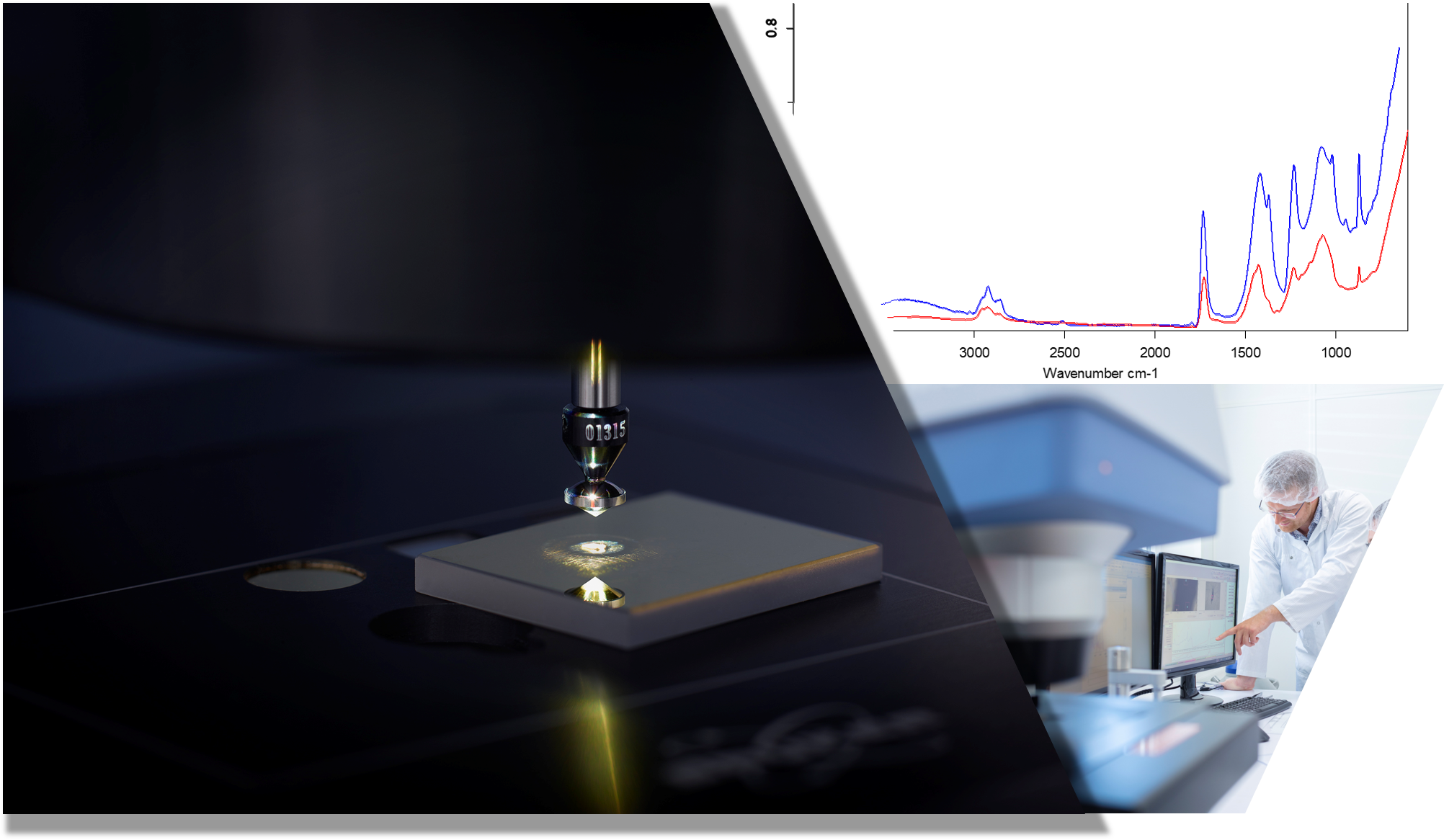Determination of organic compounds
Infrared spectroscopy (IR)
Infrared spectroscopy (IR) is ideal for the rapid classification of an organic contamination. Compared to the SEM/EDX method, this method does not determine the elemental composition of the sample but detects the vibration of the atoms in a molecule. For example, polyethylene ([CH2]n) and polystyrene ([C8H8]n) each consist only of the elements carbon and hydrogen. The determination of the elemental composition does not provide any information about the material. Due to the different structure of the polymers, however, they can be distinguished very precisely by means of IR spectroscopy.
By comparison with spectral databases, it is possible to quickly assign pure compounds to the corresponding material classes. Mixtures of substances, as they are often found in commercially available formulations, can also be detected with a certain accuracy. Customer-specific reference samples can furthermore be used for comparison. This enables the creation of tailor-made databases. In the event of damage, the origin of the problem can thus be quickly identified.
In combination with further analyses such as GC/MS, impurities can be determined and quantified quickly and reliably.
Profile
| Typical industrial branches | this method finds universal application |
|---|---|
| Type of contamination | organic contaminations (oils, greases, polymeres, lacquer…) |
| Result | qualitative material classification |
| Testing standards and regulations | VDA 19.1 / ISO 16232, ASTM E1252 |
Further Information
These tests are part of our accreditation, detailed information on the scope of accreditation can be found here.
You can also find an overview of tests for chemical-film contamination in our current brochure.
If you have any questions, the employees from our sales team will be happy to help you.
Newsletter registration

